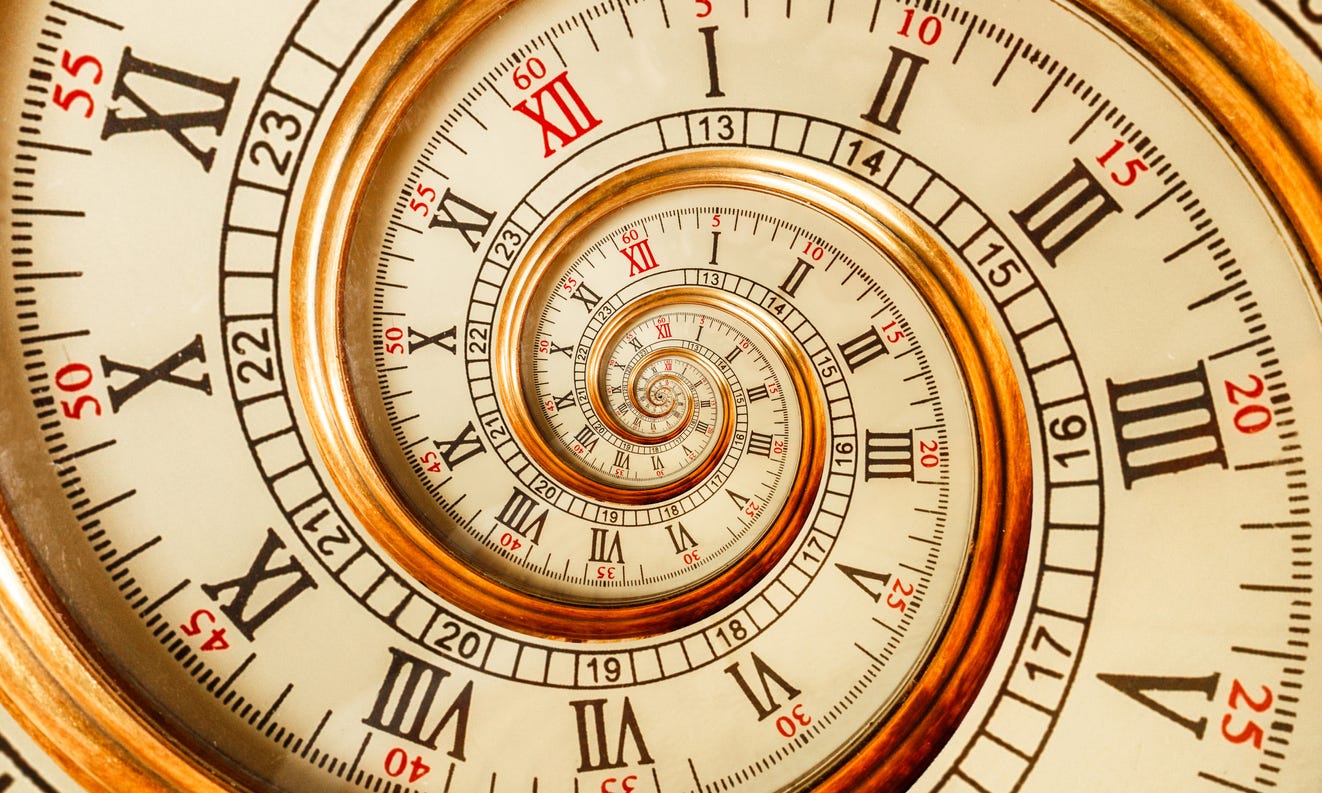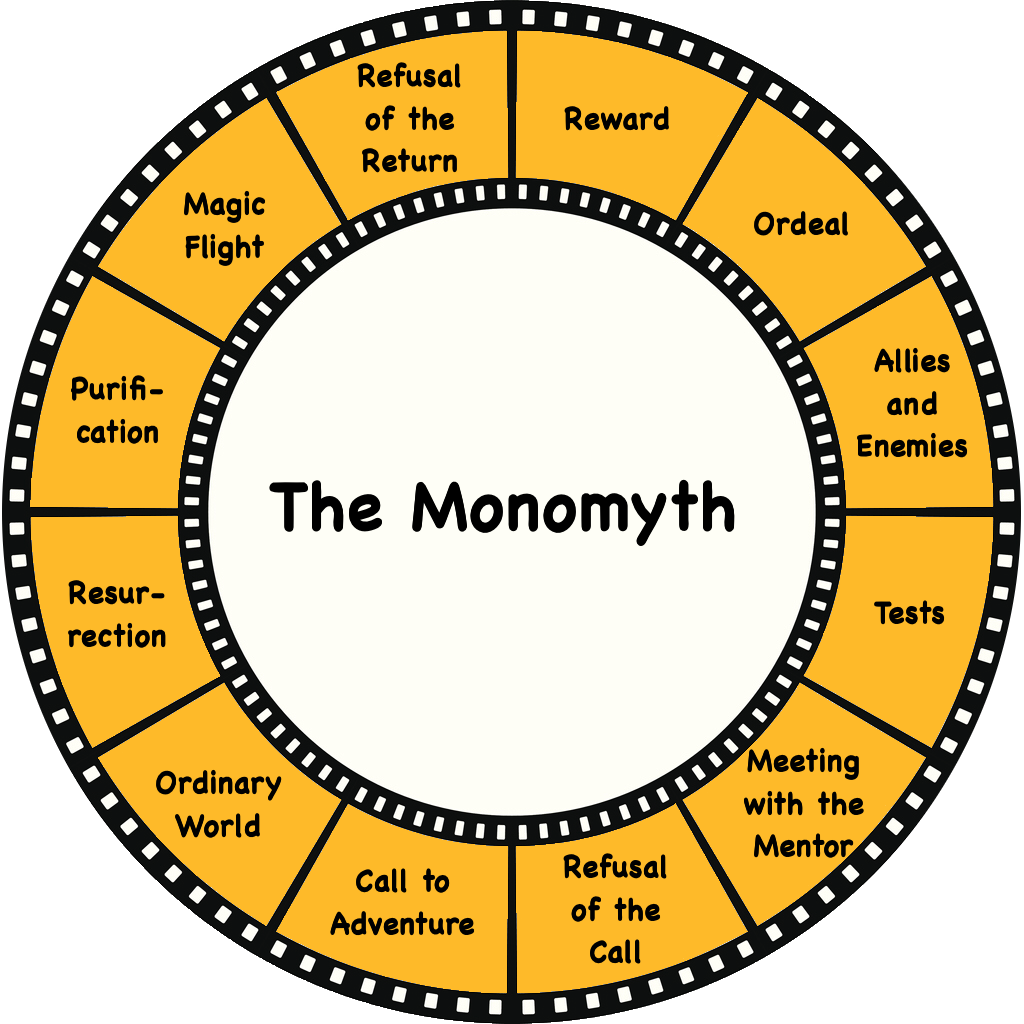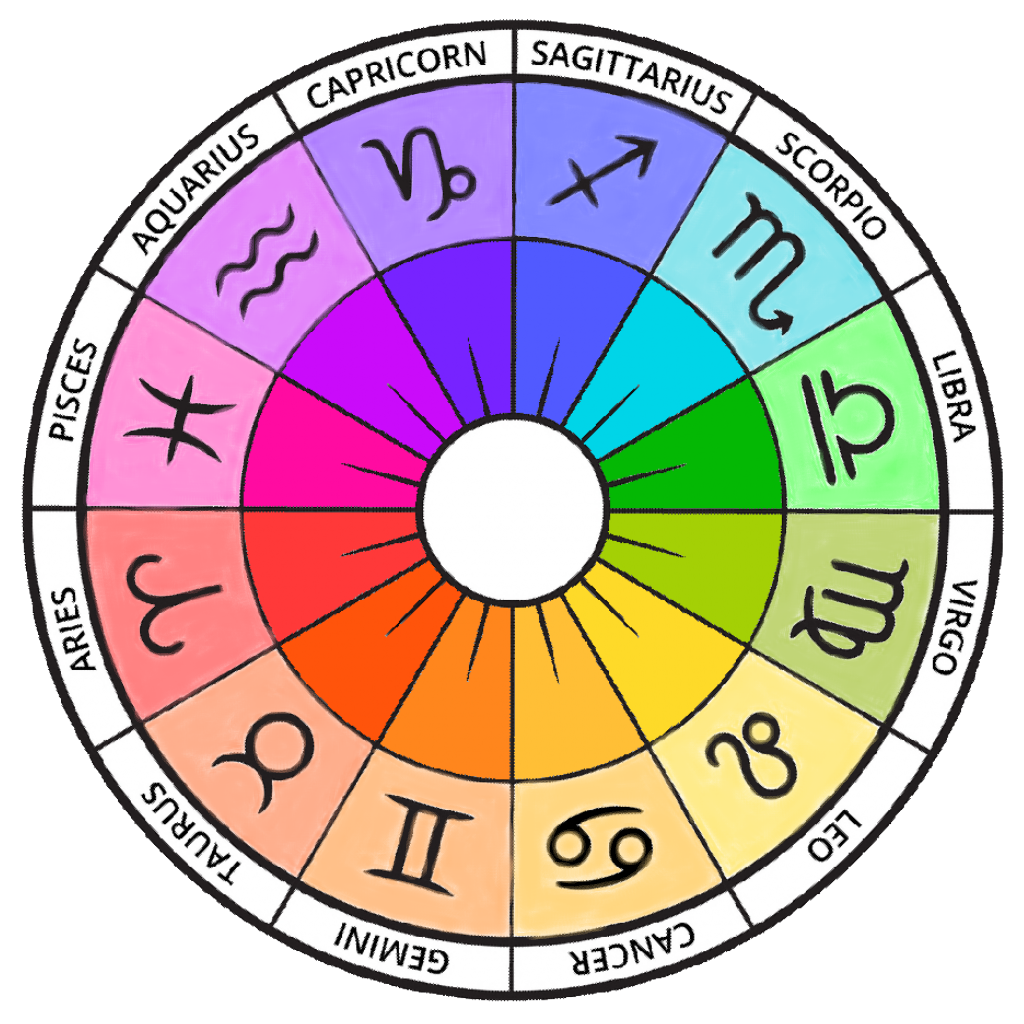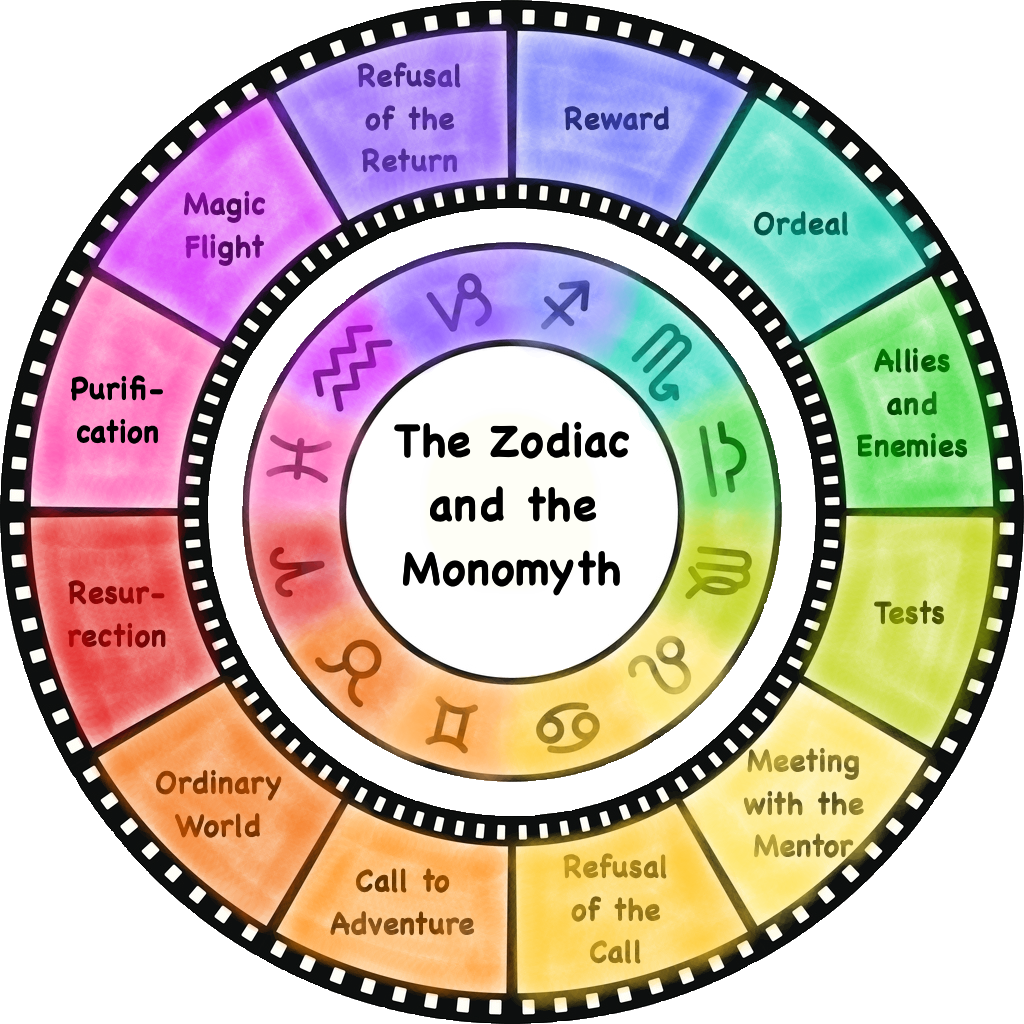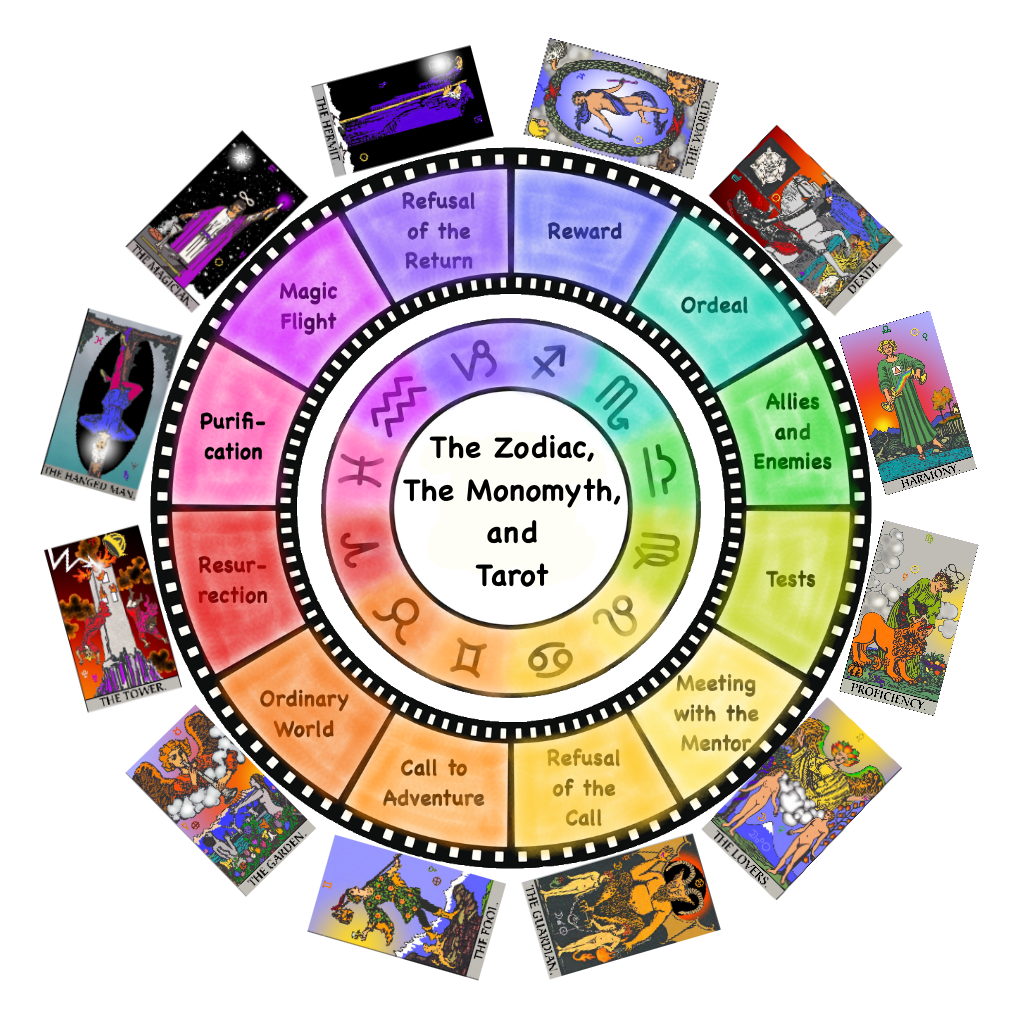Quest for the Elixir: Three Maps for the Journey
The Universal Story from Perspectives of the Zodiac, Tarot, and Joseph Campbell's Monomyth
The Quest
The quest in question is a journey through time. This is the introductory post of a series written to enrich our experience as we journey.
More Than One Map
If our destination were a physical place, one map would be enough. But because our destination is a non-physical, inner ‘place’, we need more than one.
"Language, in its origin and essence, is simply a system of signs or symbols that denote real occurrences or their echo in the human soul." — Carl Jung
What we are seeking is those real occurrences, which can only be experienced intuitively by individuals and cannot be communicated directly through any language (although the arts come the closest). We overcome that limitation by using several languages or ‘maps’, all of which point to our uncommunicable target. This frees our intuition to grasp the reality within.
Because time unfolds for us in cycles, in our quest we’ll use ‘maps’ with circular structures. They are meaningful for any cycle of time, whether a month, a year, or an entire life cycle. As we celebrate the seasons of a year, we’ll also be observing the stages of a life.
The Monomyth
Our first map is in the form of a story, the universal cyclical myth. In itself, it’s just a framework without a particular history, but throughout history it’s been playing out continuously in infinite variations.
“A myth is something that has never happened, but is happening all the time.” ― Joseph Campbell
Joseph Campbell was an American writer who did extensive worldwide research in comparative mythology and comparative religion. He concluded that, at the most fundamental level, all stories share a universal plot structure which he called the “Hero’s Journey”, or the “monomyth”. Some stories cover only part of the pattern, repeat a stage of it, or skip over a stage with little or no mention, but the general pattern always seems to be implied. This basic framework applies not only to mythology and fiction, but to all of our individual life stories as well.
"Within the field of a secular society, which is a sort of neutral frame that allows individuals to develop their own lives, so long as they don't annoy their neighbors too much, each of us has an individual myth that's driving us, which we may or may not know." ~ Joseph Campbell
“You are the Hero of your own Story.” ― Joseph Campbell
According to Campbell, each of us is a hero on a quest of adventure.
“What is it we are questing for? It is the fulfillment of that which is potential in each of us. Questing for it is not an ego trip; it is an adventure to bring into fulfillment your gift to the world, which is yourself. There is nothing you can do that's more important than being fulfilled. You become a sign, you become a signal, transparent to transcendence; in this way you will find, live, become a realization of your own personal myth.” ― Joseph Campbell, Pathways to Bliss: Mythology and Personal Transformation
Our intuition prompts and guides our quest. We follow it naturally, whether or not we are aware of any pattern. But awareness of our story in terms of mythology enriches our experience of the journey.
"Thinking in mythological terms helps to put you in accord with the inevitables of this vale of tears. You learn to recognize the positive values in what appear to be the negative moments and aspects of your life. The big question is whether you are going to be able to say a hearty yes to your adventure." — Joseph Campbell
In his book The Hero with a Thousand Faces, Campbell identifies a series of stages in the monomyth, citing examples of that sequence in myths and stories from all over the world. More recently a Hollywood screenwriter, Christopher Vogler, did the same with examples from the film industry in his book, The Writer’s Journey.
“The usual hero adventure begins with someone from whom something has been taken, or who feels there is something lacking in the normal experience available or permitted to the members of society. The person then takes off on a series of adventures beyond the ordinary, either to recover what has been lost or to discover some life-giving elixir. It’s usually a cycle, a coming and a returning.” — Joseph Campbell, The Hero With a Thousand Faces
Campbell and Vogler describe the cyclical monomyth in their own ways, using different illustrative examples from existing stories. As an astrologer, I’m very conscious of cycles and symmetry. On reading these descriptions I saw immediately that they are perfectly consistent with astrology, but I noted also that a few of the stages are treated briefly and vaguely, as though perhaps less well understood. I believe that an understanding of those stages’ astrological counterparts adds needed weight to those stages and clearer meaning to the cycle as a whole.
As the monomyth is the basic pattern of a story, my illustration of it is a circular ‘film strip’. Each frame of it represents a stage in the Hero’s Journey, and is positioned where its counterparts (house and sign) are found in a natural astrological chart. The story flows around the perimeter counterclockwise.
“A hero ventures forth from the world of common day [Vogler calls it the “ordinary world”] into a region of supernatural wonder: fabulous forces are there encountered and a decisive victory is won: The hero comes back from this mysterious adventure with the power to bestow boons on his fellow man.” ― Joseph Campbell, The Hero With a Thousand Faces
The Zodiac
Our second map is the familiar Zodiac.
If the signs of the Zodiac were parts of speech, they’d be adjectives or adverbs. They don’t tell a story, but each describes the attitudes and styles of what/whomever is associated with it. The interesting thing is that their descriptions correspond well to stages in the monomyth, as shown below.
For example, Gemini is about gathering knowledge, especially of the local environment. It describes people as alert and curious, wanting to see and learn the details of whatever is going on. Gemini observes, reads, hears, talks, and “gets around”. Where Gemini is, there tend to be lots of books and papers, local errands and the means to run them, communication of all kinds, and exchanges of news and information.
The corresponding stage of the monomyth, known as the “Call to Adventure”, involves some sort of message, encounter, or cue from one’s environment that triggers an urge for experience beyond the familiar “Ordinary World”.
Astrological houses indicate places and situations in which life happens. The house corresponding to Gemini is the 3rd house. That’s the local environment and its sources of news and information. It includes relatives and neighbors (people we might chat with) and places such as post offices, libraries, and the streets (errands to run, events to observe, people to meet). The 3rd house is where the hero of the monomyth typically encounters the “Call to Adventure”.
Tarot
Our third ‘map’ is a circle of 12 cards from the Major Arcana that correspond well to both the signs of the Zodiac and the stages of the monomyth, as illustrated below.
To extend our example, the Major Arcana character corresponding to Gemini and the “Call to Adventure” is that idealistic adventurer known as The Fool. See him in the “3rd house” position in the wheel above.
Theme of the Month
Each month our “Quest for the Elixir” will feature the Zodiac sign currently occupied by the Sun, and its counterparts in tarot and the monomyth. We’ll take a good look at them to get a feel for what they have in common.
If any cycle has a beginning, this one technically begins in the spring. But this cycle will roll for a while, and new readers can jump in at any stage without missing anything. Previous “Quest” posts will be available on the Elixir website.





